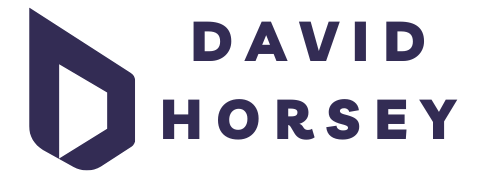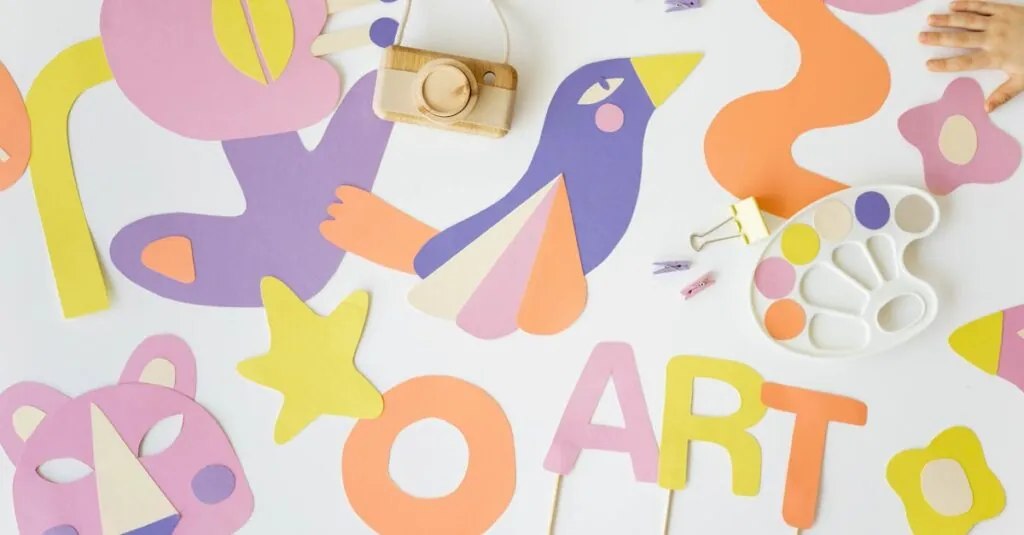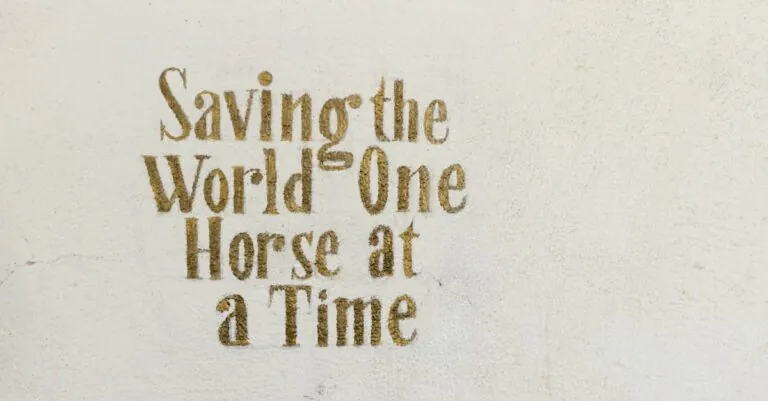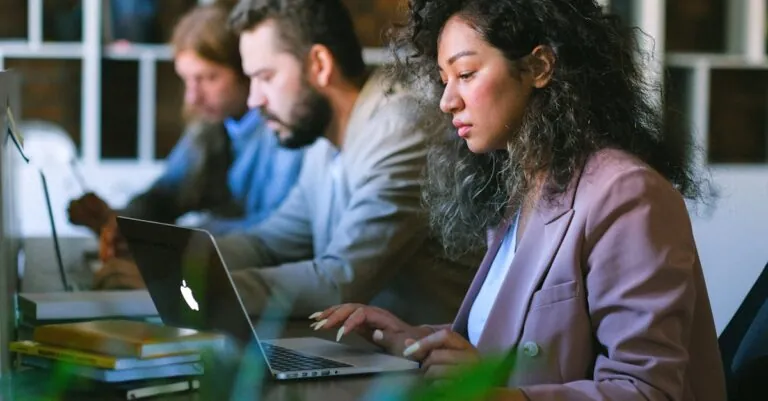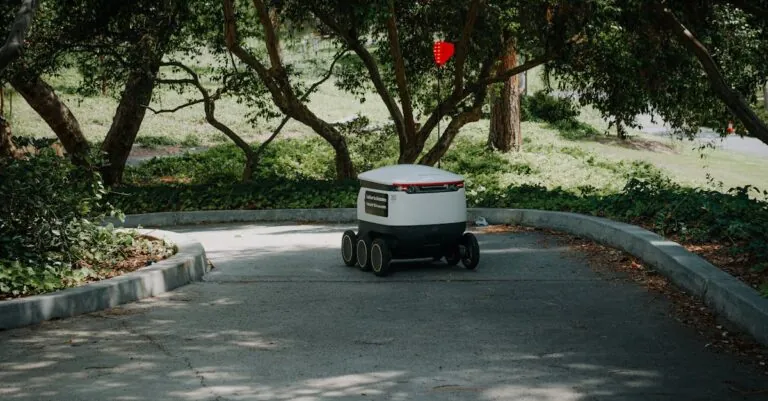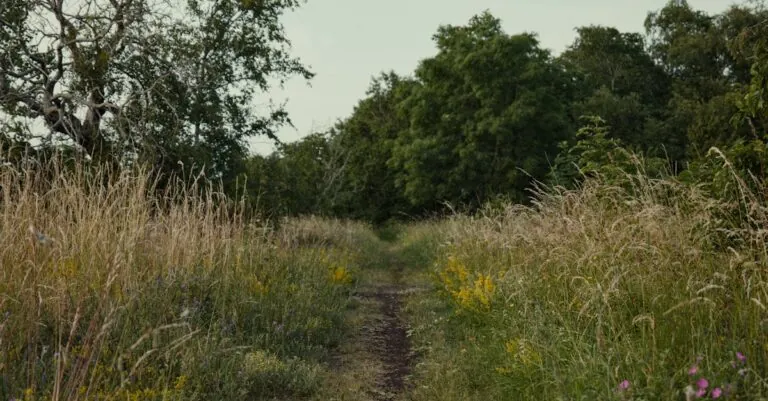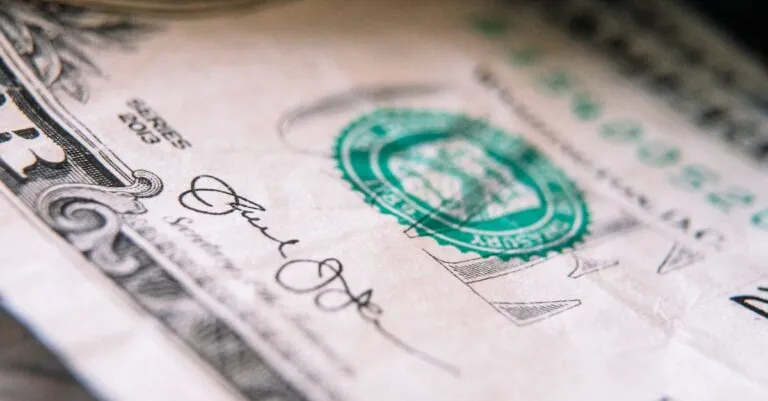Table of Contents
ToggleIn a world where creativity knows no bounds, AI image creation is shaking things up like a toddler with a crayon. Gone are the days when artists needed hours to sketch and paint; now, they can whip up stunning visuals with just a few clicks. This technology is like having a digital Picasso in your pocket, ready to turn your wildest ideas into vibrant masterpieces.
Imagine transforming a simple text prompt into a breathtaking image faster than you can say “artistic genius.” Whether it’s for marketing, social media, or just for fun, AI image creation is redefining how we think about art and design. So buckle up and get ready to explore the fascinating world where algorithms meet imagination, and creativity is only a keystroke away. Who knew that the future of art could be this entertaining?
Overview of AI Image Creation
AI image creation significantly reshapes artistic expression. Artists utilize this technology to produce remarkable visuals from text prompts, streamlining the creative process. Quick generation of images reduces workload while maintaining high-quality results. Remarkably, AI systems can learn from vast datasets, allowing them to generate diverse styles and subjects.
The integration of AI tools simplifies creation in fields like marketing and social media. Marketers leverage AI to design eye-catching graphics that capture audience attention. Social media influencers use AI-generated images to enhance their online presence and engage followers. Flexibility in design choices enables tailored content for various platforms.
With ongoing advancements, AI image creation continues to evolve. Innovations like Generative Adversarial Networks (GANs) enhance image realism and detail quality. AI tools also assist in refining users’ ideas into polished visuals. These developments expand creative possibilities, inviting artists to experiment boldly.
Collaboration between artists and AI encourages new artistic movements. Some creators embrace AI as a partner, while others critique its impact on traditional art forms. As AI image generation democratizes access to artistry, diverse voices contribute to a richer creative landscape. The fusion of technology and creativity leads to unprecedented outcomes, transforming how art is perceived and produced.
Understanding AI’s role in image creation unlocks new potentials for artists and industries alike. Enhanced productivity paired with creative freedom signifies a future where innovation thrives effortlessly.
Popular AI Image Creation Tools
Numerous tools in the market empower users to create stunning images using AI technology. Each tool offers unique features catering to different artistic needs.
DALL-E 2
DALL-E 2 utilizes a powerful neural network to generate intricate images from text descriptions. This tool allows users to input specific prompts, resulting in detailed visuals that align closely with their requests. Its advanced capabilities include creating variations of original images, enabling users to explore multiple artistic interpretations. DALL-E 2 impresses with its ability to blend concepts seamlessly, providing inspiration for creative projects across various domains.
Midjourney
Midjourney provides an intuitive platform for users seeking artistic image generation. It excels in transforming textual prompts into unique art pieces, often with an ethereal quality. This tool is particularly popular among digital artists and designers, allowing them to generate novel concepts while experimenting with different styles. Users appreciate how quickly Midjourney produces captivating visuals, making it invaluable for brainstorming sessions and creative collaborations.
Stable Diffusion
Stable Diffusion stands out for its open-source nature, fostering community-driven enhancements. Users can access advanced features, customizing the tool to fit specific artistic visions. This flexibility supports various creative disciplines, from graphic design to marketing. High-quality images generated by Stable Diffusion often exhibit impressive realism and diversity, significantly benefiting professionals aiming to elevate their visual content.
Applications of AI Image Creation
AI image creation finds applications across various sectors, transforming practices in art, marketing, and education.
Art and Design
Artists use AI tools to explore new artistic styles and concepts. Generative Adversarial Networks (GANs) enable the creation of intricate visuals, pushing boundaries in the artistic process. Artists collaborate with AI, producing unique pieces that may not be achievable through traditional methods. Each generated visual acts as a springboard for further creativity, allowing for rapid iteration. The accessibility of these tools democratizes artistry, inviting diverse voices to the forefront. Platforms like DALL-E 2 and Midjourney empower even novice creators to produce impressive works, thereby expanding the definition of art.
Marketing and Advertising
AI image creation revolutionizes marketing campaigns with stunning visuals tailored to specific audiences. Marketers leverage AI tools to quickly generate custom graphics, which enhances engagement. AI-generated images can illustrate products and concepts dynamically, capturing consumer attention. The speed of production allows for continuous iteration and testing, ensuring alignment with market trends. Furthermore, AI facilitates personalization, crafting visuals that resonate with diverse demographics. Companies using this technology improve their branding and promotional efforts while reducing the time and cost associated with traditional design processes.
Education and Training
AI image creation plays a significant role in education, enhancing visual learning materials. Instructors utilize AI-generated images to improve engagement and comprehension among students. Visual aids produced by AI support various learning styles, making concepts more accessible. Additionally, educational institutions incorporate these tools in art programs, exposing students to cutting-edge technology. The ability to generate custom images fosters creativity in lesson planning and project development. Furthermore, practical exercises with AI tools prepare students for future careers in technology-driven industries.
Ethical Considerations
Ethical concerns surround AI image creation, raising important questions about ownership and misuse.
Copyright Issues
Intellectual property affects AI-generated imagery significantly. When an AI tool creates an image, who retains the copyright? Artists often worry that their styles or elements might get replicated without acknowledgment or compensation. Current laws struggle to address these nuances. Many jurisdictions haven’t established clear guidelines regarding AI-generated content, leaving artists vulnerable to copyright infringement. Artists may find it challenging to protect their original work while embracing AI tools. This uncertainty necessitates ongoing dialogue among legal experts, artists, and technologists to find balanced solutions.
Misuse of AI-Generated Images
Concerns regarding the misuse of AI-generated images impact trust in digital content. AI tools can create deepfakes, misleading images weaponized for misinformation campaigns. Such misuse undermines the credibility of authentic artistic expression. Artists face the risk of having their work altered or misrepresented, leading to misinterpretations. Education about responsible usage must accompany AI technology adoption. Establishing ethical guidelines ensures that AI serves as a tool for creativity rather than manipulation. Ethical considerations in AI image creation influence its acceptance and integration into society.
AI image creation is revolutionizing the way artists and marketers approach their work. By simplifying the creative process and enabling rapid experimentation, this technology opens doors to innovative artistic expressions and enhanced visual content. As industries adapt to these advancements, the collaboration between human creativity and AI is set to redefine traditional boundaries.
However, with these exciting possibilities come important ethical considerations. Addressing issues of ownership and misuse is crucial for fostering a responsible environment where AI serves as a tool for creativity rather than a source of manipulation. As the dialogue around these challenges continues, the future of AI image creation promises to be both dynamic and transformative.
